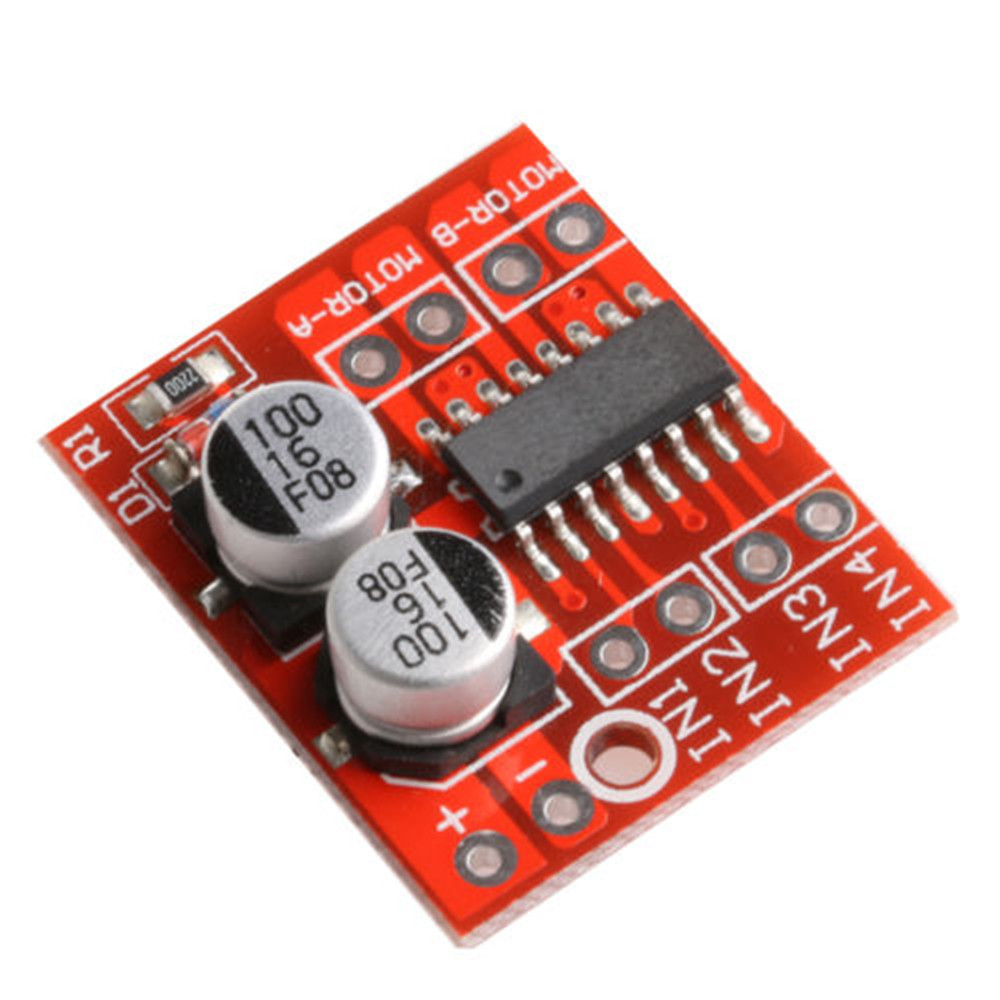

#Steren l298n motor driver software
With three-dimensional wireframe views and multiple floating tool windows, the Atmosphere Builder was reminiscent of both CAD software and professional graphics applications like Adobe Photoshop.Ī built-in Havok physics engine, detailed rendering, and dynamic lighting (with support for lighting effects like radiosity, distance fog, and glare) also contributed to the realism of Atmosphere worlds. Some world developers wrote scripts that limited communication to users within a certain distance, for greater realism.


The exception was when worlds would receive too many visitors, as was often the case at HomeWorld: worlds would "clone", creating duplicate channels for the same world, which would often cause confusion for users. Technically, users could chat with anyone in the same YACP channel, a reference to the IRC protocol (see below). This model was more appropriate for Atmosphere, considering the smaller sizes of most worlds. Whereas in ActiveWorlds it is only possible to communicate with users within a 200-meter radius, Atmosphere users could chat with all the users in the world. An early quirk of Atmosphere displayed users whose avatars had not yet loaded as colorful, slanted cylinders, and announced the arrival of users with a " bug zapper" sound. In later builds, an option allowed the user to see his or her own avatar. Users were represented in worlds by avatars. aer file format, though the ASCII format was phased out in later releases.aer files could be generated dynamically using server-side content management systems, as demonstrated by the Worlds Directory. There were binary and ASCII versions of the. Unlike the more centralized structure of Active Worlds, in which environments are primarily built within AlphaWorld, Atmosphere worlds were spread throughout the Internet, usually hosted on the author's own Web site as. However, Viewpoint stopped supporting the Atmosphere subcomponent some time before Atmosphere was discontinued. Many worlds also contained animated polygon meshes made possible by Atmosphere's implementation as a subcomponent of Viewpoint Corporation's Viewpoint Media Player. Invisible, "subtractive" primitives could be used to cut "holes" in other primitives, to build more complex shapes. These primitives could be painted a solid color, given an image-based texture, or made "subtractive". Ītmosphere-based worlds consisted mainly of parametric primitives, such as floors, walls, and cones.
#Steren l298n motor driver windows
By version 1.0, Atmosphere also boasted support for using Macromedia Flash animations and Windows Media Video as textures. Using JavaScript, a world author could link an object to a Web page, so that a user could, for example, launch a Web page by clicking on a billboard advertisement (Ctrl+Shift+Click in earlier versions). Objects in worlds were scriptable using a specialized dialect of JavaScript, allowing a more immersive environment, and worlds could be generated dynamically using PHP. atmo) file, images and sounds were kept separately, usually in the GIF, WAV or MP3 format. Although the world itself was described in the. Portals were indicative of the Atmosphere team's desire to mirror the functionality of Web pages. These portals were represented as spinning squares of red, green, and blue that revolved around each other and floated above the ground. In Adobe's Atmosphere Museum of Art, each gallery was connected via a system of colorful "portals."Ītmosphere focused on explorable "worlds" (later officially called "environments"), which were linked together by "portals", analogous to the World Wide Web's hyperlinks.


 0 kommentar(er)
0 kommentar(er)
